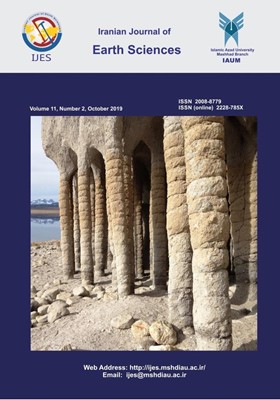Determine folding mechanism of Lali structure, northern Dezful, Zagros, Iran
Subject Areas : Mineralogy
Gholamreza Asgari
1
,
Farzin Ghaemi
2
*
![]() ,
Bahman Soleimany
3
,
Behnam Rahimi
4
,
Mehrdad Maleki
5
,
Bahman Soleimany
3
,
Behnam Rahimi
4
,
Mehrdad Maleki
5
1 - Department of Geology, Faculty of Science, Ferdowsi University of Mashad, Iran
2 - Department of Geology, Faculty of Science, Ferdowsi University of Mashad, Iran
3 - Exploration Directorate of the National Iranian Oil Company (NIOC), Tehran, Iran
4 - Department of Geology, Faculty of Science, Ferdowsi University of Mashad, Iran
5 - Exploration Directorate of the National Iranian Oil Company (NIOC), Tehran, Iran
Keywords: Folding mechanism, Geometry parameters, Detachment depth, Dezful Embayment, Zagros,
Abstract :
Lali sub-surface structure, with a NW-SE Zagros trending is located in Dezful Embayment. To determine the folding mechanism, structural geometric parameters including limbs dip, amplitude, wavelength, and crestal length were determined in four stages during deformation. In order to investigate the lateral folding mechanism, these geometric parameters were analyzed in three parts in the Lali structure including northwest, central and southeast. Lali structure in all three sections, show detachment folding mechanism. At the initial stage, due to the rheology of the region's stratigraphic units, the folding mechanism was fault-bend fold and due to the thickness of incompetent units, folding mechanism changes from the fault-bend fold to fault detachment fold and growth of this structure continues with this mechanism. As the deformation continues, detachment folding, the Dahlstrom type inclined to migration type. By identifying the folding mechanism of the Lali structure, determination of the detachment depth was necessary with two computational and graphical methods. Therefore, the depth of this surface was estimated at about 7500-8500 m for Lali structure. This amount is determined at the maximum thickness of the stratigraphic sequence of the region due to the migration of incompetent units to the core of the Lali structure.

